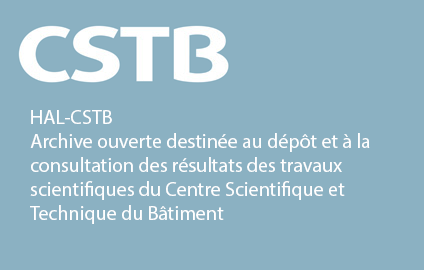Summer comfort in attics: solar factor and operative temperature
Résumé
This paper deals with summer thermal comfort. "Human thermal comfort is the state of mind that expresses satisfaction with the surrounding environment" according to ASHRAE Standard 55. Thermal comfort depends on air velocities, radiant temperature and humidity... Most important for thermal comfort is the so called operative temperature. This is the average of the air dry-bulb temperature and of the mean radiant temperature at the given place in a room. During a typical hot summer day, the maximum of operative temperature, called critical interior temperature, defines the summer comfort. Critical interior temperature is a function of many building parameters such as ventilation strategy, heat capacity Cj, U value and solar factor S or solar transmittance. The aim of this paper is to deeply analyze the solar factor. In fact, S plays a major role in summer comfort; the radiative transmittance of the sun radiation impacts strongly the energy flux transmitted inside a building and increases its temperature, thus decreasing the thermal comfort. In a first step, two methods to evaluate S are presented: In ventilated pitched roof, S cannot be calculated by simple rules and formula and must be measured or simulated because of ventilated air gap existence. A scale one climatic chamber test bench has been built at the CRIR research center to measure the solar factor of different insulation systems. Then, CFD simulations have been used as second method to calculate S taking into account natural convection, conduction and radiation heat transfer modes. In a second step of this work, a comparison of different insulation systems is presented. The impact of air gap thickness, reflective barriers and extra openings has been studied on S values for different U values. The results showed a dependency between the thermal resistance of the insulation system and its solar factor S: the solar factor S is lower as the thermal resistance is higher. In the last step, numerical simulations have been used to identify the impact of the solar factor on summer thermal comfort. The impact of the solar factor on the internal operative temperature and on the thermal comfort has been evaluated using a global simulation software. Results showed that a precise evaluation of this factor is necessary in order to calculate the occupants' feeling of their thermal comfort.
Origine : Fichiers produits par l'(les) auteur(s)
